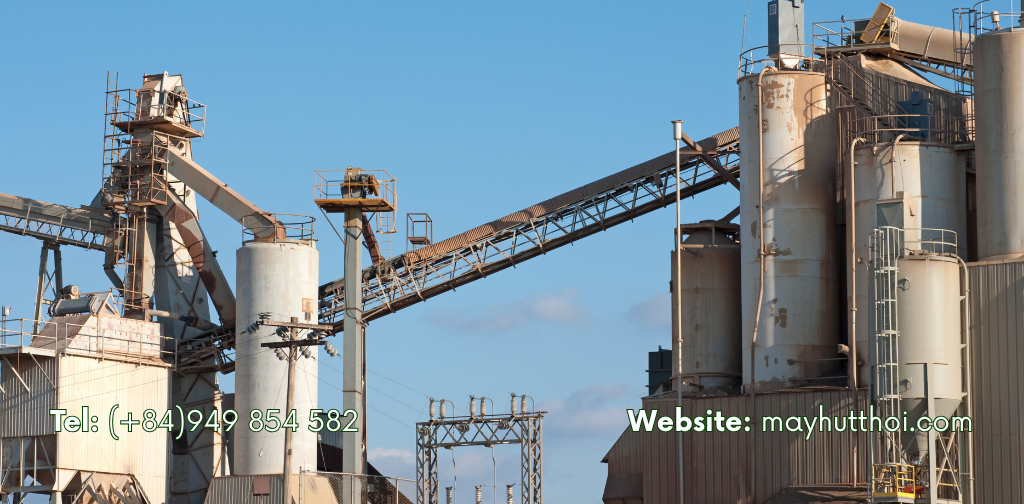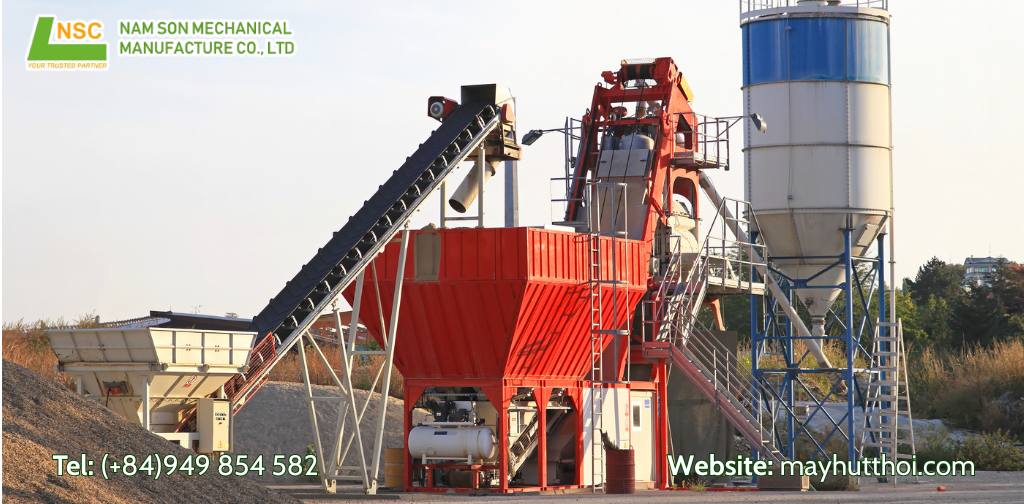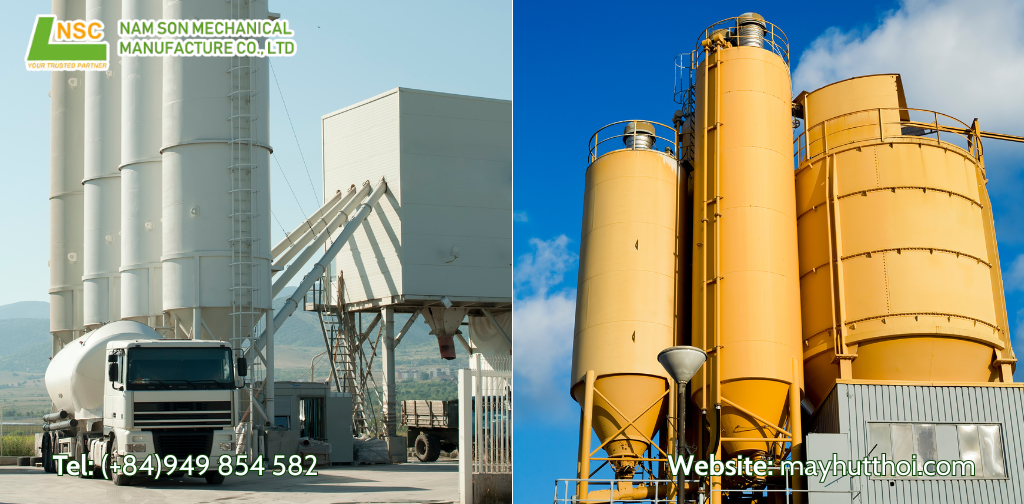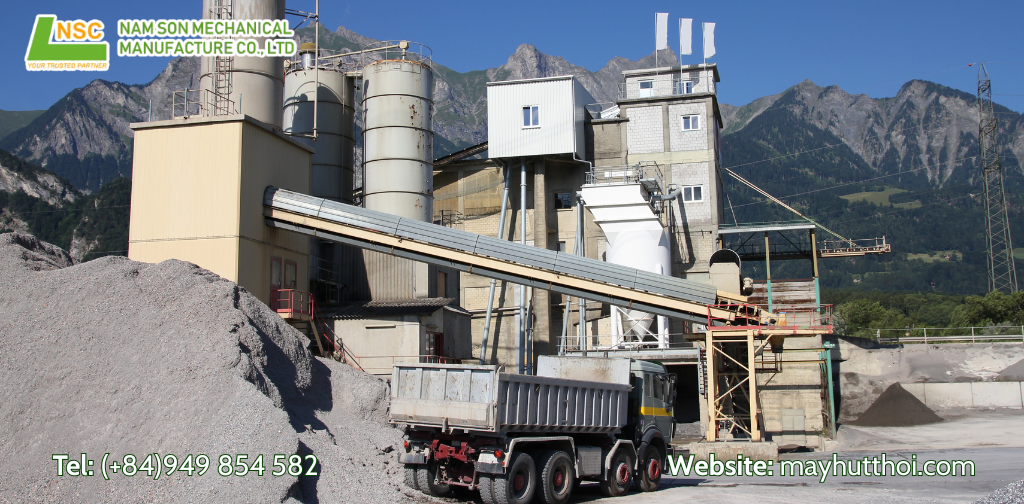In industries such as
construction,
ready-mix concrete production, and
dry mix mortar plants, long-term storage of bulk materials like cement, lime, or fly ash is a recurring challenge. Traditional storage methods such as bags or warehouses often fail to maintain quality, leading to moisture damage, material loss, and higher costs.
This is why companies are increasingly turning to
bulk cement storage silos. Unlike conventional storage, a silo ensures that materials remain dry, safe, and readily available for production. More importantly, it integrates seamlessly into automated systems, reduces waste, and provides a cost-effective, long-lasting solution for
long-term material storage.
Understanding bulk cement storage silos
1. What is a cement storage silo?
A
cement storage silo, also referred to as a
bulk silo for cement, cement storage tank, or bulk cement bin, is a specialized structure designed to store and dispense powdered materials such as cement. Unlike warehouses or cement bags, silos can hold hundreds or even thousands of tons of material while preserving their quality over extended periods.
By preventing moisture absorption and contamination, cement silos guarantee that raw materials remain suitable for high-quality concrete production, block manufacturing, or other construction applications.
SEE MORE: What is cement silo storage and the role of it in modern concrete production
2. Different designs and sizes
Cement silos come in a wide range of designs and capacities to suit various project needs:
+ Vertical cement silo – occupies minimal ground space and is ideal for large concrete batching plants.
+ Horizontal cement silo – suitable for sites with height restrictions or limited space.
+ Bolted cement silo – can be transported in sections and assembled on-site.
+ Welded steel silo – extremely durable, commonly used for high-capacity requirements.
Additionally,
mini silos and p
ortable cement silos are designed for small-scale projects or temporary use.
3. Materials used in silo construction
The construction material of a
silo determines its durability and resistance to environmental conditions:
- Steel cement silos and stainless steel cement tanks are valued for their high structural strength.
- Galvanized silos are corrosion-resistant, making them suitable for humid or coastal regions.
- Concrete silos are often chosen for extremely large storage requirements and permanent installations.
Key features and advantages for long-term storage
1. Essential features for safe operation
Modern
bulk cement storage silos are equipped with advanced features that ensure efficiency and safety:
~ Dust collectors to minimize dust emissions and maintain a cleaner environment.
~ Screw conveyors for reliable and continuous cement feeding.
~ Aeration systems to prevent clumping and ensure smooth material flow.
~ Level indicators to monitor material quantity in real time.
~ Pressure relief valves to protect the silo from internal pressure fluctuations.
2. Long-term benefits of cement silos
Choosing a silo for long-term material storage provides significant benefits:
• Cost-effective cement silo – reduces overall storage and operational costs.
• Eco-friendly bulk silo – minimizes material loss and reduces environmental impact.
• Durable storage tank – offers exceptional longevity under demanding conditions.
• Energy-efficient design – optimizes power consumption during operation.
• Maintenance-free system – requires minimal upkeep, saving both time and money.
3. Why silos outperform other storage options
When compared to
cement bags or traditional warehouses, silos clearly outperform other solutions:
⊹ Safe cement storage – protects against moisture, contamination, and spoilage.
⊹ Space-saving silo design – maximizes ground space efficiency.
⊹ Long-lasting cement storage tank – guarantees consistent material quality over years of use.
Applications and flexibility in different industries
1. Cement and construction industries
In
concrete batching plants,
ready-mix concrete plants,
dry mix mortar plants, and
precast facilities, silos play a critical role in maintaining uninterrupted production. By automating the material feeding process, silos improve efficiency, reduce labor, and eliminate delays caused by material shortages.
2. Beyond cement: alternative materials
While cement is the most common material stored in silos, these structures are versatile enough to accommodate a wide range of powders:
⌖ Fly ash silos – for storage of fly ash used in blended cement and concrete.
⌖ Gypsum powder silos are commonly applied in the production of construction materials production.
⌖ Lime silos – used in chemical and environmental industries.
⌖ Bulk powder storage silos – suitable for minerals, chemicals, and other industrial powders.
This flexibility makes bulk silos an attractive investment across multiple sectors.
3. Flexibility in transportation and setup
Another major advantage of silos is their adaptability in logistics and installation:
⋆ Mobile cement silos – designed for projects requiring frequent relocation.
⋆ Containerized silos – easy to transport globally and set up quickly.
⋆ Prefabricated silos – delivered in modular form for fast assembly at the job site.
⋆ Dismantled silos – can be disassembled and reused for different projects.
These options make silos practical not only for permanent plants but also for temporary or large-scale construction projects.

Choosing the right cement silo supplier
1. Factors when selecting a supplier
Selecting a reliable
cement silo manufacturer,
bulk silo supplier, or
silo factory is crucial. A trusted supplier guarantees compliance with industry standards, provides installation services, and offers long-term technical support.
2. Price and market options
When considering costs, businesses can choose between several options:
∞ Purchasing a brand-new silo at a competitive cement silo price.
∞ Opting for used silos for sale or second-hand cement silos to reduce capital expenditure.
∞ Exploring cement silo rental services for short-term projects or pilot operations.
This flexibility allows companies to select the best solution for their budget and project duration.
3. Supporting equipment and accessories
A complete
silo system often includes additional components that enhance performance and safety:
• Cement screw conveyors for efficient material transfer.
• Silo bag filters to reduce dust emissions.
• Aeration pads and valves to ensure smooth discharge.
• Silo safety systems, including ladders, railings, and monitoring devices.
These accessories improve overall functionality and safeguard both operators and equipment.

Conclusion – Why bulk cement storage Silos are the best choice
A
bulk cement storage silo is the most reliable, cost-effective, and long-lasting solution for
long-term material storage, helping industries maintain efficiency, safety, and sustainability while meeting the growing demands of modern construction.
Looking for a reliable bulk cement storage silo solution? Contact us today for expert consultation, competitive pricing, and customized storage systems tailored to your needs! CONTACT US
Website: mayhutthoi.com |
namsonco.comAlibaba: dthson.trustpass.alibaba.comFacebook: facebook.com/NamSonPneumaticConveyorZalo/Whatsapp: (+84) 949854582
Email: mailan@namsonco.com | thanhson@namsonco.com






